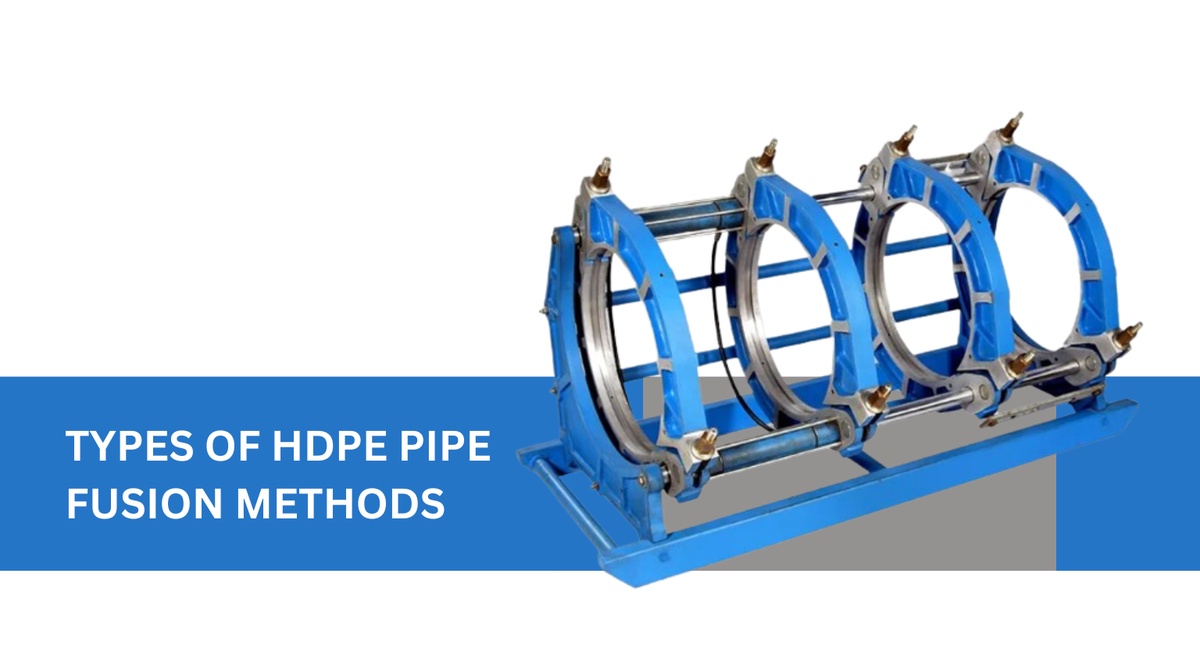High-density polyethylene (HDPE) pipes have become a preferred choice in many industries. The reason is, that these pipes offer durability, flexibility, and resistance to corrosion and chemicals. These pipes find extensive applications in water supply, gas distribution, sewer systems, and more. One crucial aspect of HDPE pipe installation is fusion, which ensures strong, leak-free joints between pipes. The most important tool for conducting this process is the HDPE Pipe Jointing Machine. In this blog, learn the basics of these machines and we’ll also go through the different types of HDPE pipe fusion techniques and their applications.
HDPE Pipe Jointing Machine
HDPE pipe jointing machines are devices that are used to join or fuse High-Density Polyethylene (HDPE) pipes. These devices provide robust and dependable couplings between HDPE pipes in a variety of applications. The type of machine utilized is determined by the jointing process, which may be butt fusion, electrofusion, or socket fusion.
HDPE Pipe Jointing Machine: Different types of HDPE Pipe Fusion
Butt Fusion
The most popular technique for merging HDPE pipes is called "butt fusion." It involves heating the ends of two pipes simultaneously and then pressing them together to form a permanent joint. This fusion technique is ideal for joining pipes of the same diameter and wall thickness, providing a seamless, leak-proof connection. Butt fusion is widely employed in water and wastewater systems, as well as in industrial applications where reliable joints are essential.
Electrofusion
Electrofusion is a fusion technique that utilizes specialized fittings equipped with built-in heating elements. These fittings are connected to the pipes and an electrofusion control unit, which regulates the fusion process. When an electric current passes through the heating element, it melts the pipe surface, allowing the fittings to fuse with the pipe material. Electrofusion offers advantages such as faster installation, versatility in joint angles, and suitability for repairs and connections in confined spaces. It is commonly used in gas distribution networks, mining operations, and infrastructure projects.
Socket Fusion
Socket fusion is a simple and reliable method for joining smaller-diameter HDPE pipes (typically up to 2 inches). It involves heating the pipe and the fitting socket simultaneously, then quickly inserting the pipe into the socket and holding it in place until the joint cools and solidifies. Socket fusion creates strong, homogeneous joints without the need for additional materials like glue or solvents. This fusion technique is popular in plumbing, irrigation, and residential applications where smaller pipe sizes are predominant.
Saddle Fusion
Saddle fusion is a specialized fusion technique used for branching off from existing pipelines or installing fittings onto pipes. It involves heating a saddle-shaped fitting and the pipe surface simultaneously, then pressing the fitting onto the pipe to create a secure joint. Saddle fusion is particularly useful in situations where lateral connections or modifications are required, such as in water distribution networks and irrigation systems.
Heat Fusion
Heat fusion encompasses various fusion techniques, including butt fusion, socket fusion, and saddle fusion, where heat is applied to join HDPE pipes and fittings. This method relies on the principle of melting the polymer surfaces to form a cohesive bond, ensuring structural integrity and leak resistance. Heat fusion offers several advantages, including joint strength, chemical resistance, and long-term performance, making it a preferred choice in demanding applications across industries.
Conclusion
Each type of HDPE pipe fusion technique has its advantages and applications, catering to diverse project requirements and environmental conditions. High-quality HDPE Pipe Jointing Machines, proper fusion procedures, equipment calibration, and adherence to industry standards are crucial to achieving robust, leak-free joints and ensuring the long-term integrity of HDPE piping systems.


No comments yet